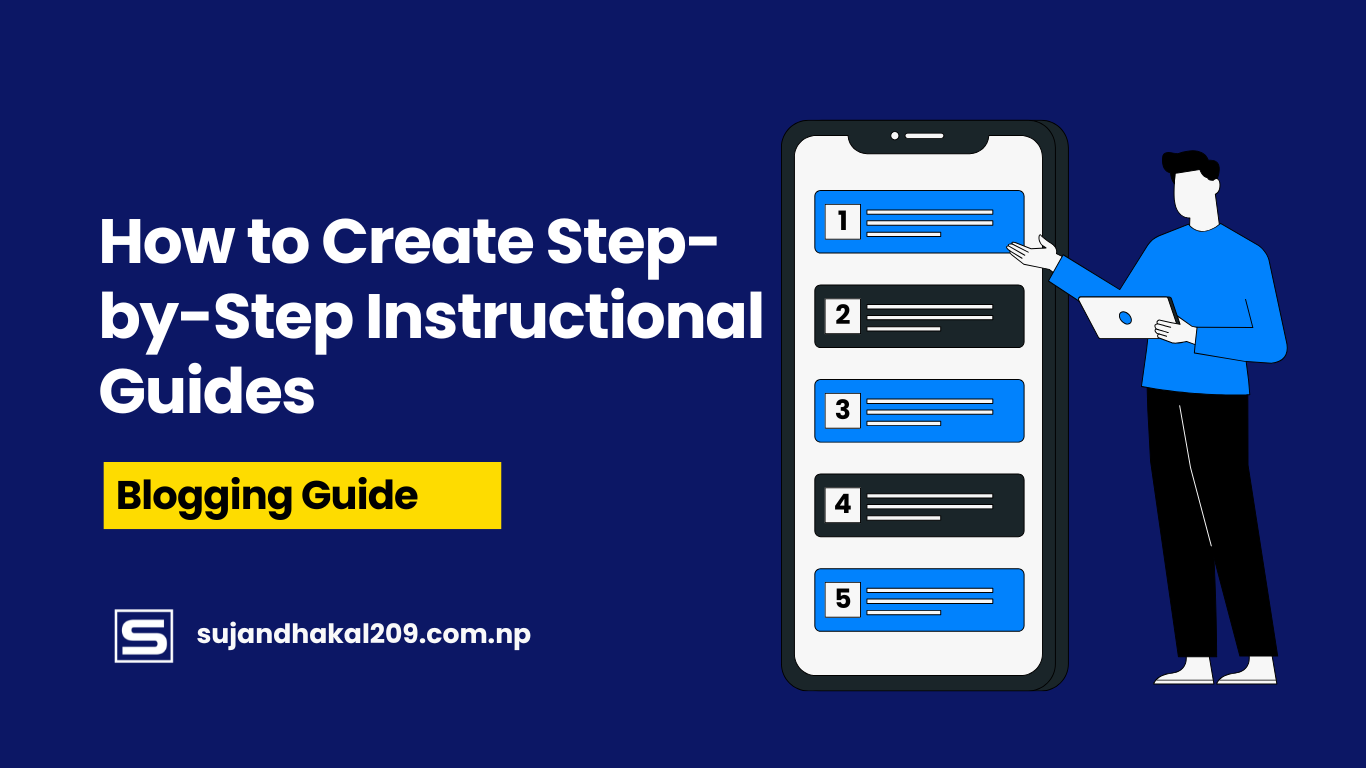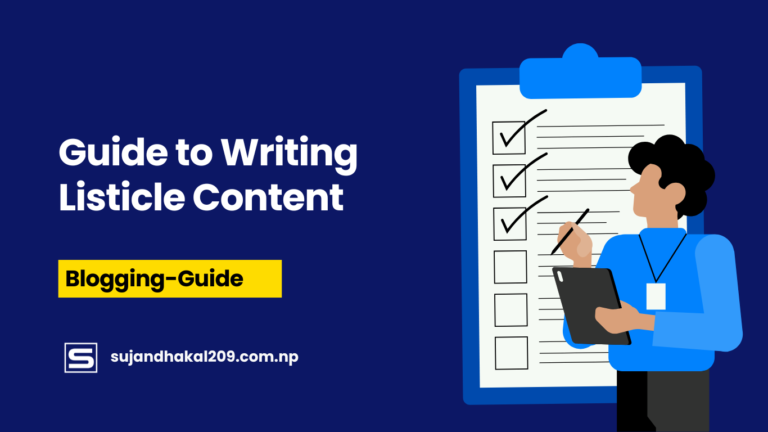Step-by-step instructional guides are one of the most powerful tools for educating audiences, improving user experience, and boosting SEO rankings. Whether you’re creating a tutorial, a product manual, or a process documentation, having a structured approach ensures clarity and usability.
In this guide, we’ll walk you through the best practices for crafting step-by-step guides in 2025, along with SEO optimization techniques to maximize visibility.
Why Step-by-Step Instructional Guides Matter
Improves User Experience
Step-by-step guides provide users with structured information, making it easier to complete tasks. A well-written guide reduces frustration and increases engagement.
Boosts Search Engine Rankings
Search engines love detailed, well-organized content. Instructional guides that follow SEO best practices can rank higher, bringing in consistent organic traffic.
Enhances Brand Authority
Brands that offer helpful guides establish themselves as industry leaders, gaining trust and credibility among their audience.
Increases Conversions and Customer Satisfaction
For businesses, instructional guides improve customer satisfaction, reducing support queries and increasing product adoption rates.
Understanding Your Target Audience
Before writing an instructional guide, it’s essential to know who you are writing for.
Identify Your Audience’s Knowledge Level
- Are they beginners or experts?
- Do they need basic or advanced explanations?
Understand Their Pain Points
- What problems are they facing?
- How can your guide provide solutions?
Research Keywords and User Intent
Use tools like Google Keyword Planner, Ahrefs, or SEMrush to find relevant search queries related to your guide.
Planning Your Instructional Guide
Before writing, organize your content to ensure a logical flow.
Define the Purpose
- What is the goal of the guide?
- What should the user accomplish by the end?
Break Down the Process
- Outline all the steps in a logical order.
- Ensure each step leads smoothly to the next.
Choose the Right Format
Consider using:
- Numbered Lists (for step-by-step instructions)
- Bullet Points (for tips and notes)
- Images and Videos (for visual learners)
Structuring the Guide for Maximum Clarity
Use a Clear Headline and Subheadings
- Your title should be specific (e.g., “How to Bake a Chocolate Cake in 5 Steps”).
- Use H2 and H3 headings to divide sections clearly.
Step-by-Step Format
- Use numbered steps for clarity.
- Start each step with a verb (e.g., “Click,” “Select,” “Enter”).
Use Simple and Direct Language
Avoid jargon unless necessary. Keep sentences short and to the point.
Writing Clear and Concise Instructions
Be Direct
Say “Click the Start button” instead of “You should now click on the Start button.”
Use Active Voice
- ✅ Correct: “Select the file and click ‘Save’.”
- ❌ Incorrect: “The file should be selected, and then the ‘Save’ button should be clicked.”
Provide Examples
Instead of just saying “Enter your details”, provide an example like:
“For example, enter your name as ‘John Doe’ and email as ‘john@example.com’.”
Using Visuals to Enhance Understanding
Adding images, GIFs, or videos makes your guide more engaging.
Types of Visuals to Use
- Screenshots (for software guides)
- Diagrams (for complex processes)
- GIFs (for quick demonstrations)
- Videos (for in-depth tutorials)
Best Practices for Images
- Use high-quality images with annotations.
- Keep images consistent in style and size.
SEO Optimization for Instructional Guides
Use Target Keywords Naturally
- Place keywords in the title, headings, and body without keyword stuffing.
Optimize for Featured Snippets
- Write concise answers to common questions.
- Use bullet points or numbered lists.
Improve Readability
- Use short paragraphs and plenty of white space.
- Write at a 5th-8th grade reading level for accessibility.
Tools and Software for Creating Guides
Some top tools for writing instructional guides include:
- Canva (for designing visuals)
- Snagit (for capturing and annotating screenshots)
- Loom (for recording video tutorials)
- Google Docs (for collaborative writing)
Testing and Refining Your Guide
Before publishing your instructional guide, it’s crucial to test it thoroughly to ensure accuracy and clarity.
Conduct User Testing
- Ask someone from your target audience to follow the guide.
- Observe where they struggle and note areas that need improvement.
Check for Errors
- Ensure there are no grammatical mistakes or unclear instructions.
- Double-check technical steps, links, and resources.
Improve Based on Feedback
- Gather user feedback through surveys or comments.
- Refine your content to make it even more user-friendly.
Publishing and Promoting Your Guide
Once your guide is polished, it’s time to publish and promote it effectively.
Choose the Right Platform
- Company Blog: Ideal for business-related guides.
- YouTube: Perfect for video-based tutorials.
- PDF/Downloadable Guide: Useful for offline access.
Optimize for SEO Before Publishing
- Ensure proper meta tags, descriptions, and headings.
- Use alt text for images to improve accessibility.
Promote Across Multiple Channels
- Share on social media platforms.
- Include in email newsletters.
- Post in relevant online communities and forums.
Measuring Success and Improving
After publishing, it’s essential to track performance and make continuous improvements.
Track Key Metrics
Use Google Analytics and Search Console to measure:
- Traffic – How many people visit your guide?
- Engagement – How long do users stay?
- Conversion Rate – Does it lead to sign-ups, purchases, or other actions?
Optimize Based on Data
- Update outdated information.
- Improve readability based on user behavior.
- Add new keywords to boost search rankings.
Common Mistakes to Avoid
❌ Skipping the Planning Phase
Jumping straight into writing without outlining the guide can result in disorganized content.
❌ Using Complicated Language
Avoid technical jargon unless necessary. Keep it simple and clear.
❌ Ignoring SEO Best Practices
If your guide isn’t optimized, it won’t rank well on search engines, reducing visibility.
❌ Not Including Visuals
Text-heavy guides without images or videos can be overwhelming and hard to follow.
Examples of Great Instructional Guides
Here are some top examples of well-structured instructional guides:
- HubSpot’s Blog Tutorials – Clear, well-structured, and SEO-optimized.
- Microsoft Support Guides – Detailed instructions with step-by-step screenshots.
- YouTube Video Tutorials – Visual learning for step-by-step processes.
Future Trends in Instructional Guide Creation
As technology advances, instructional guides are evolving.
AI-Powered Guides
AI-driven chatbots and virtual assistants will offer real-time instructional support.
Interactive Tutorials
Expect to see more interactive, hands-on tutorials where users can practice steps in real-time.
Voice and Video Search Optimization
With voice search on the rise, guides will need to be optimized for spoken queries and video results.
Final Thoughts
Creating a step-by-step instructional guide requires careful planning, clear writing, and effective SEO strategies. Whether you’re helping users navigate a software tool, teaching a DIY project, or writing a technical manual, following best practices ensures that your guide is valuable and easy to follow.
By continuously improving your content and keeping up with SEO trends, your instructional guides can remain highly ranked and widely shared.
FAQs
1. How long should a step-by-step guide be?
The length depends on the complexity of the topic. A simple guide can be 500-1000 words, while a detailed tutorial may exceed 3000 words.
2. What is the best way to structure a step-by-step guide?
Use numbered steps, clear subheadings, bullet points, and visuals to make the guide easy to follow.
3. How can I make my guide more engaging?
Include examples, visuals, and interactive elements like quizzes or videos to keep readers interested.
4. How do I optimize an instructional guide for SEO?
Use target keywords, internal links, alt text for images, and structured headings to improve search rankings.
5. Should I update my instructional guides over time?
Yes! Regular updates ensure your guide remains accurate and relevant, which helps maintain its SEO ranking.





